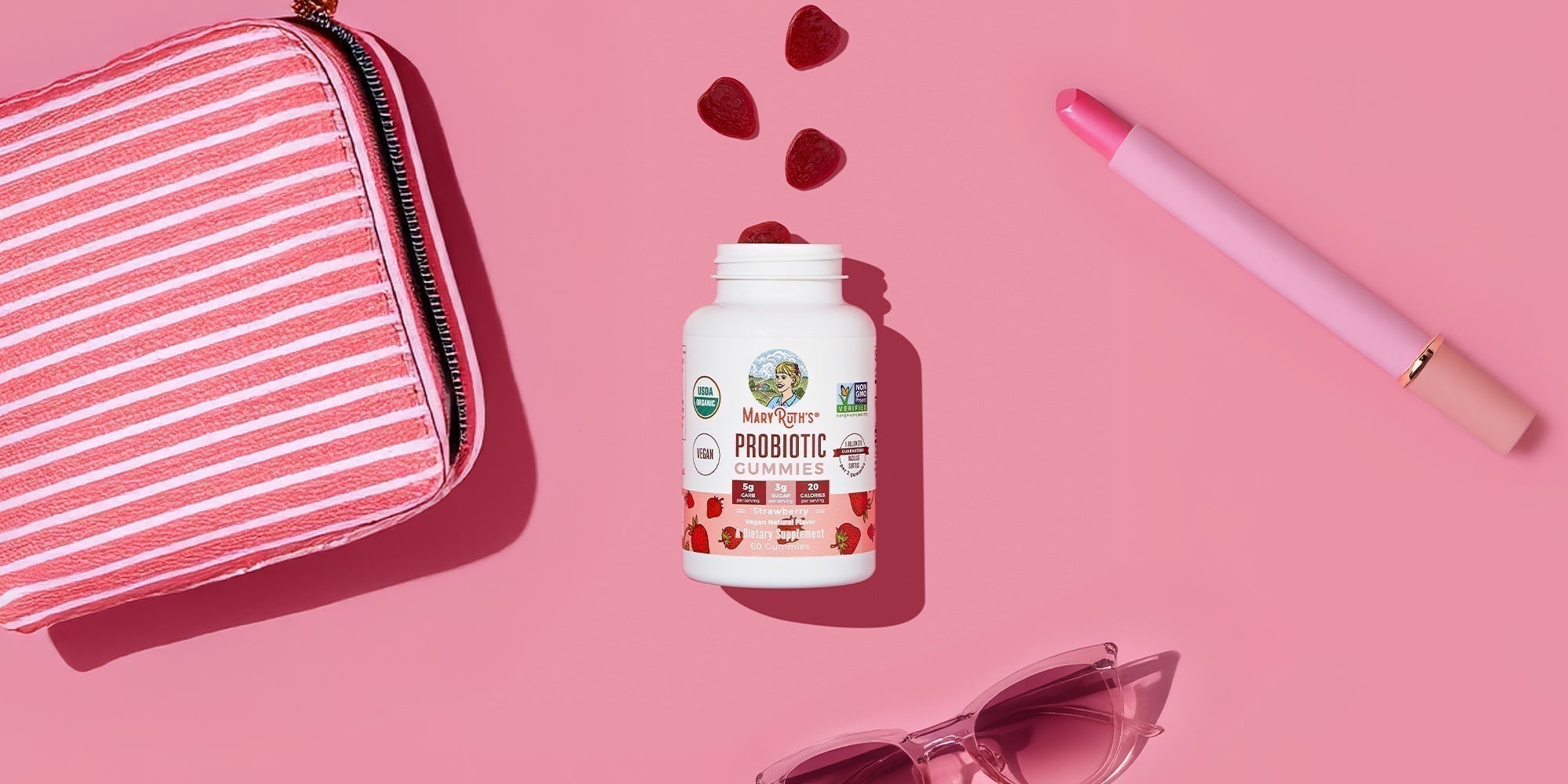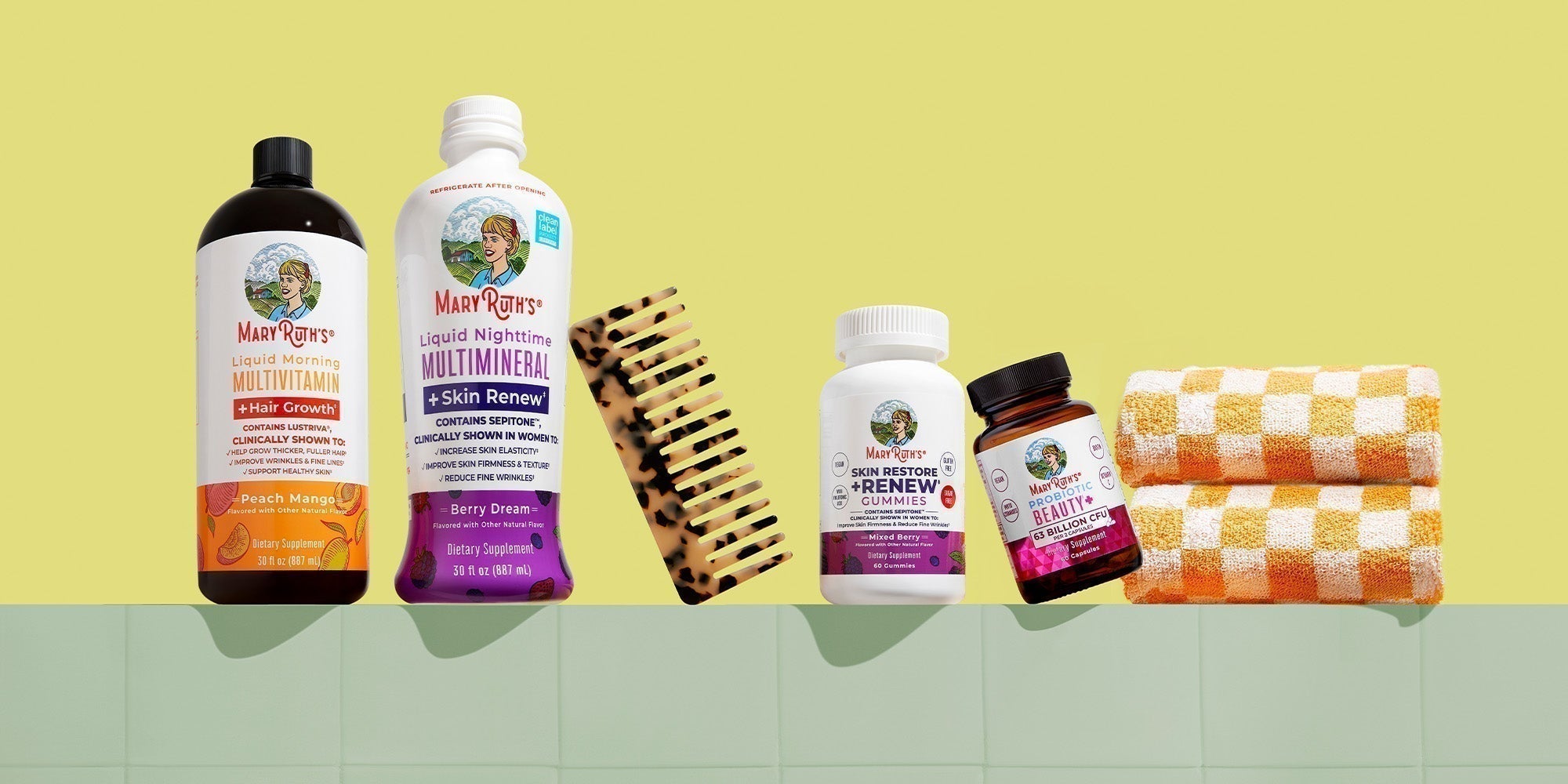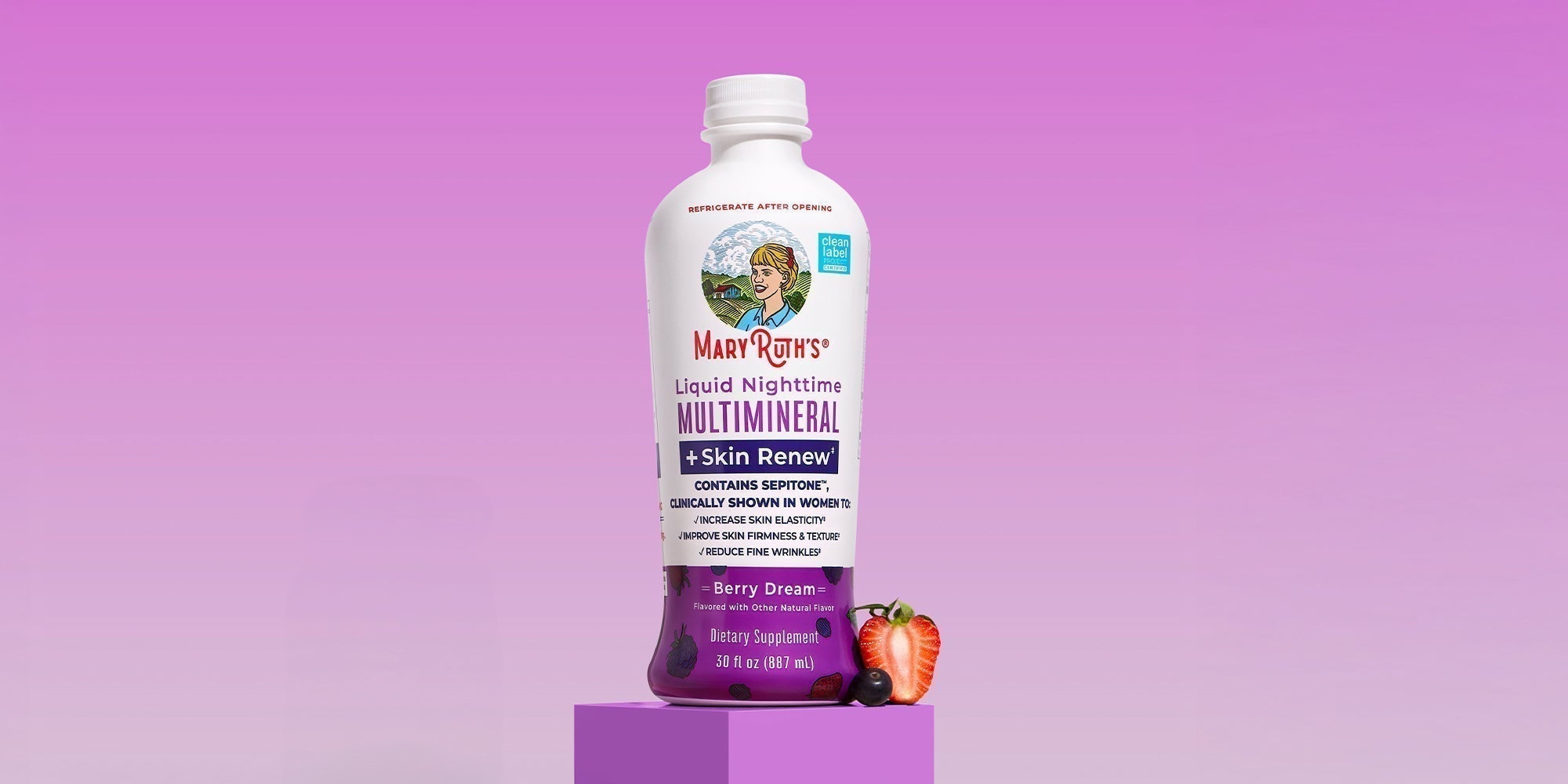When you hear the dreaded term “MSG,” what is your immediate reaction? Do you feel a negative connotation with this word?
Though MaryRuth’s is not necessarily pro-MSG, the truth is, MSG is often misconstrued and not fully understood by most people. We understand that there are preconceived notions and a lot of questions about this ingredient.
Many of our customers are curious about MSG, and we always aim to educate others. There’s a lot of opposing information out there about MSG, so let’s break it down and take a closer look at it.
What is MSG?
MSG, or Monosodium glutamate, is the sodium salt derived from the common amino acid L-glutamic acid, which is naturally present in our bodies, as well as in some foods and food additives. Glutamic acid is considered a non-essential amino acid since our bodies make it on their own. This amino acid is necessary for protein synthesis and is even the most widespread neurotransmitter in brain function.
MSG has been used in various ways over the years, usually as a flavor enhancer, especially in Asian cuisines because of its umami flavor. It was first discovered in 1908 in Japan and was not introduced to the United States until the late 1940s. MSG usage has increased dramatically in the U.S. over the past 30 years, but it remains most commonly used in Asian countries, with over half of its consumption being in China alone.

Its unique taste was named “umami” by its founder, Japanese chemist Kikunae Ikeda. This word comes from the Japanese word “umai,” meaning “delicious.” Since its discovery, umami has sometimes been recognized as the fifth basic taste, after salty, sweet, sour, and bitter.
Is MSG Safe?
MSG has been labeled GRAS (generally recognized as safe) by the FDA.
Though there have been anecdotal reports of symptoms such as headaches, flushing, sweating, or nausea from some people after ingesting MSG, researchers have yet to find a definitive link between MSG and these symptoms, which are typically mild and do not require treatment.
People who experience some of these potential side-effects of MSG seem to be MSG-sensitive individuals, experiencing what used to be referred to as “Chinese restaurant syndrome” (CRS) and was later named the “MSG symptom complex” (MSC). It’s estimated that MSG sensitivity affects less than 1% of the general population.
In the 1990s, the FDA asked the independent scientific group Federation of American Societies for Experimental Biology (FASEB) to examine the safety of MSG after receiving adverse event reports. While FASEB was able to find some of these mild and short-term symptoms, it was only in some sensitive individuals who consumed 3 grams or more of MSG without food. A typical serving of food with added MSG usually contains less than 0.5 grams of MSG, so consuming 3 grams or more at one time without food is unlikely and not suggested.
The Reality of MSG Headaches
Though some studies have shown a correlation between MSG-induced headaches, the underlying mechanism hasn’t been clear, and it has led to a lot of controversy over MSG.
For example, there are no reports of children experiencing MSG headaches, and it doesn’t seem to be a problem amongst the Chinese population, the largest consumers of MSG in the world.
Because of glutamic acid’s role as a neurotransmitter, some studies suggest that MSG side effects may be partially mediated by its effect on brain neurons. Yet, many studies conclude that it is premature to link MSG present in food to headaches, and the International Headache Society (IHS) has removed MSG from its list of causal factors of headaches in The International Classification of Headache Disorders, 3rd edition after additional research has failed to conclusively link the two.
Foods With Naturally Occurring MSG
Although MSG is most commonly added to foods such as fast food, chips, seasoning blends, frozen meals, processed meats, soups, and more, there are actually many foods that naturally contain glutamates in them!
The most commonly known foods with natural glutamate are tomatoes and Parmesan cheese, but they aren’t the only ones. Glutamate is also present in peas, corn, mushrooms, asparagus, and more. The glutamate found naturally in foods and the glutamate in MSG is chemically indistinguishable, and our bodies ultimately metabolize it in the same way, regardless of its form of intake.
When MSG is used as a food additive, it is recommended that only 0.1%–0.8% of the food’s total weight is added, which corresponds to the amount of free L‐glutamate naturally present in a tomato or parmesan cheese.
Even if a product contains ingredients with naturally occurring sources of MSG, the FDA does not allow “No MSG” or “No Added MSG” claims on the packaging, and the foods must be listed in the ingredient panel. Additionally, MSG cannot be listed as “spices and flavoring.”
Are All ‘Natural Flavors’ Really MSG?
Along with MSG’s negative connotations for most people, it is also widely believed that any product containing “natural flavors” on its ingredient list is a hidden name for MSG.
Natural flavors are flavor enhancers that manufacturers add to their products to improve the taste of the food or supplement. Below are the FDA’s rules regarding natural flavors.
“The term natural flavor or natural flavoring means the essential oil, oleoresin, essence or extractive, protein hydrolysate, distillate, or any product of roasting, heating or enzymolysis, which contains the flavoring constituents derived from a spice, fruit or fruit juice, vegetable or vegetable juice, edible yeast, herb, bark, bud, root, leaf or similar plant material, meat, seafood, poultry, eggs, dairy products, or fermentation products thereof, whose significant function in food is flavoring rather than nutritional.”
Simply put, some natural flavors may include MSG, since it is naturally occurring in ingredients such as hydrolyzed vegetable protein, autolyzed yeast, hydrolyzed yeast, yeast extract, and soy extracts.
Delicious, Wholesome Supplements
Everyone is always asking us, “what do you think of MSG?” And while MaryRuth’s always believes that the nutrients that we give our bodies should first come from whole, natural foods, sometimes we need the convenience or aid in our busy lives of easy-to-prepare foods or easy-to-take supplements. MaryRuth’s was created to provide wholesome, healthy supplements for the whole family that MaryRuth feels comfortable taking for herself and giving to her own family.
We believe that making the best supplements for your health means creating products with non-GMO, plant-based, vegan ingredients, with the fewest number of allergens as possible. We do our best to find only the highest quality ingredients and to formulate good-tasting products that aid your body on your way to wellness!
While formulating delicious-tasting vitamins and supplements sometimes requires natural flavors to enhance the taste, we pride ourselves on the quality of our supplements and always put our customers first. We can confirm our products have no added MSG, though we do acknowledge that naturally occurring MSG may occur; as we get more resources available, we plan to test more of our products for naturally occurring MSG.
We appreciate any and all feedback and hope that our products benefit your overall health and well-being.




